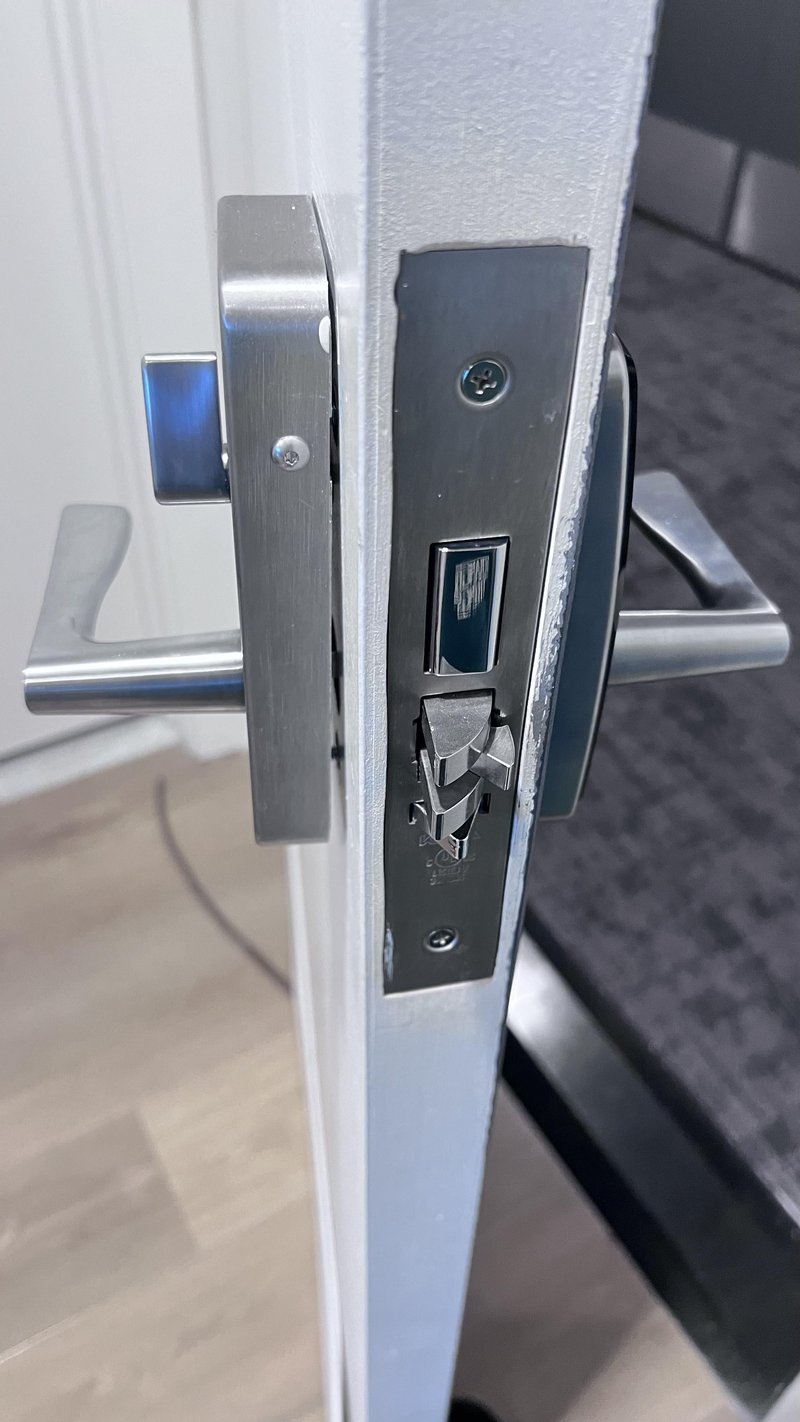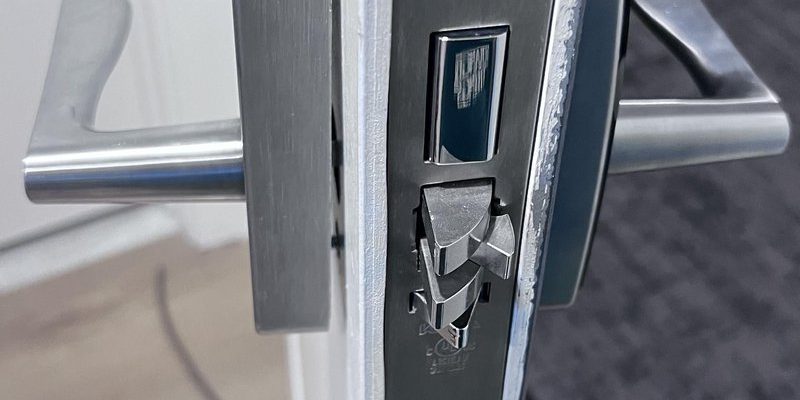
Honestly, fixing a wobbly exterior door knob is one of those simple repairs anyone with a screwdriver and a few minutes can do. The trick is understanding *why* the knob is loose (spoiler: it’s rarely complicated), knowing which screws or plates to adjust, and making sure you don’t accidentally make it worse. If you’re new to home repairs, don’t worry—I’ll walk you through every step and explain the little quirks different brands like Schlage or Defiant might throw your way.
Why Exterior Door Knobs Get Loose Over Time
First, let’s talk about *why* this happens. Every time you turn your door knob, the internal screws and mounting plate take a tiny bit of stress. Multiply that by hundreds of twists a month, and eventually, something’s going to loosen up.
Most exterior door knobs have a few key parts: two knobs (inside and out), a spindle connecting them, a latch that slides in and out, and a mounting plate or screws holding everything to the door. If any of those screws start to back out—even a little—your whole knob gets that wobbly, “about to fall off” feeling. It’s not just annoying; a loose knob can make it harder to lock your door or even damage the latch mechanism over time.
You might be wondering if weather plays a role. It does! Exterior doors see temperature swings, humidity, and rain. Wood and metal expand and contract, so even a perfectly installed knob might work its way loose after a harsh winter or steamy summer. And for anyone who’s ever overtightened the screws trying to fix it—yeah, that can strip the holes and make it even worse.
Tools You’ll Need To Fix a Wobbly Door Knob
Here’s the thing: you don’t need a toolbox full of specialty gear. In fact, the whole job often comes down to a single screwdriver. The trick is knowing which screwdriver you’ll need because different brands use different screws.
- Phillips head screwdriver: Most common. Looks like a cross.
- Flathead screwdriver: Sometimes used for older or budget models.
- Allen wrench (hex key): Occasionally needed for knobs with hidden set screws.
- Needle-nose pliers: Handy for grabbing stubborn or stripped screws.
You might also want a flashlight to see tiny screws or a small container for holding loose parts. And if the screws are stripped, a toothpick and wood glue (for filling screw holes) could save your day.
Step-by-Step: How To Tighten a Loose Exterior Door Knob
Let me walk you through the standard process—no skipping steps, no guesswork.
-
Inspect the knob and find the screws.
Start by looking at both sides of the knob. Most exterior knobs (Schlage, Kwikset, Defiant, Yale, etc.) will have visible screws on the inside. Sometimes, there’s a decorative cover hiding them. If you don’t see any screws, lightly twist or pry that cover (use your flathead screwdriver)—but don’t force it or you might scratch the finish. -
Tighten the screws.
Grab your Phillips or flathead screwdriver and slowly tighten the screws. Don’t crank them or you’ll risk stripping the wood or bending the metal bracket. If you feel the screw spin without getting tighter, the hole may be stripped—we’ll talk about fixing that in a bit. -
Check the set screw.
Some knobs have a tiny set screw (it’ll be on the side of the knob or under the lever). This holds the knob to the spindle inside. Use an Allen wrench or the right screwdriver to snug it up. -
Test the knob.
Once the screws are tight, twist and turn the knob. Does it feel solid? Try locking and unlocking the door to make sure everything lines up.
If your knob still wobbles, don’t panic. There could be extra play in the mounting bracket or even in the door itself. That’s where it helps to go a bit deeper.
What To Do If The Screws Won’t Tighten
Sometimes, tightening the screws does nothing—they just keep spinning. That usually means the screw hole is stripped. Here’s what you can do:
If a screw hole is stripped out, the screw can’t “bite” into the wood. It’ll just rotate, leaving your knob loose forever.
- Pull out the screw and fill the hole with a toothpick dipped in wood glue (or a matchstick, if you have one). Break it off flush with the surface.
- Let the glue dry for 30 minutes to an hour.
- Reinsert the screw and tighten gently. The toothpick gives the screw new wood to grip.
If you’re dealing with a metal door or can’t get the screw to bite at all, you can use a slightly larger screw or grab a screw anchor designed for metal doors.
When To Replace Instead of Repair
Honestly, not every wobbly knob can be saved forever. If yours is super old, rusty, or the lock mechanism doesn’t work right even after tightening, it may be time for a replacement.
Here’s a quick table to help you decide:
| Sign | Repair | Replace |
| Knob wobbles but tightens up with screws | ✔ | |
| Screws keep stripping or falling out | ✔ (try toothpick trick) | ✔ (if trick fails) |
| Lock mechanism sticks, doesn’t latch | ✔ (try lubricating) | ✔ (if persistent) |
| Rust, cracked knob, or broken parts | ✔ |
If you choose to replace, you can buy a new exterior door knob kit at hardware stores. Universal brands fit most doors, but if you want a perfect match, check your current brand (look near the latch for tiny stamps or ask your local hardware pro).
Tips For Long-Term Door Knob Care
You might be thinking, “Do I really have to mess with my door knob more than once?” Here’s the thing: a little maintenance goes a long way.
- Check the screws twice a year. Make a habit of tightening them during your spring and fall cleaning.
- Lubricate the latch. Spray a bit of graphite or silicone lube—never use WD-40 on locks—into the keyhole and latch for smoother action.
- Seal the door edges. If you have a wooden door, add weatherstripping or a door sweep to keep moisture out and prevent swelling.
- Avoid slamming the door. It wears out the knob and can loosen the screws faster.
These little steps will keep that Schlage, Kwikset, or off-brand knob working for years—and keep your home feeling safe.
Choosing the Right Exterior Door Knob (If You Need a New One)
If you do end up swapping your knob, you’ll have a few choices to make. Not all exterior door knobs are created equal. Think about your priorities: is security number one, or do you care more about finish and style?
- Brand: Schlage and Kwikset are safe bets for durability. Defiant is budget-friendly but may not last as long in harsh weather.
- Type: Decide if you want a keyed entry (lock from outside), a lever (easier for kids/elderly), or even a smart lock (fancier but pricier).
- Finish: Match your door hardware or choose something that resists fingerprints and weather (satin nickel is a solid option).
- Fit: Most exterior door knobs are “universal fit,” but double-check the backset measurement (the distance from the edge of the door to the center of the knob).
If you’re handy, installing a new knob only takes about 15 minutes. Just follow the kit instructions—they’re usually pretty clear, no matter which brand you choose. (And yes, all the troubleshooting, syncing, and resetting you might do with a smart lock counts as extra-credit home repair.)
Common Mistakes To Avoid When Fixing a Door Knob
Let me explain some common ways beginners get tripped up, so you don’t have to learn the hard way.
- Overtightening the screws. It feels satisfying, but cranking down too hard can crack the knob’s mounting plate or strip the wood.
- Forgetting hidden screws. Some knobs have a set screw hidden under the handle—if your knob still wobbles, look for these sneaky fasteners.
- Mixing up parts. When you take apart the knob, put the screws and tiny springs in a cup or tray. Lose even one, and you’ll be hunting under the fridge for hours.
- Neglecting the latch. If the knob feels tight but still wiggles, the latch plate on the edge of the door might be loose. Tighten those screws, too.
Stay patient and go step by step. If something feels stuck, don’t force it—back up and make sure you haven’t missed a hidden screw or cover plate.
Final Thoughts: A Solid Knob Makes a Solid First Impression
You don’t need to be a pro handyman to fix a wobbly exterior door knob—just a bit of patience and the right screwdriver. Honestly, tackling this tiny repair makes a bigger difference than you’d think. Your door will feel more secure, your lock will work better, and you’ll avoid the “loose tooth” surprise every time you come home.
No matter if you’ve got a trusty Schlage, a quirky old Kwikset, or a universal replacement model, the steps are just about the same. Tighten up those screws, check for hidden set screws, and give your door knob a little TLC every now and then. You’ll keep your home safer, your hands happier, and skip the stress of a surprise hardware store run when a cheap fix could have saved the day.
